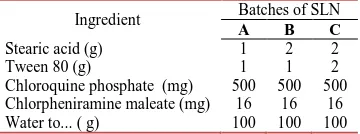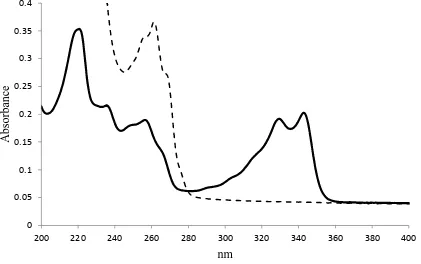Preliminary formulation and characterization of solid lipid nanoparticles containing chloroquine and a P glycoprotein inhibitor: Influences of lipid surfactant ratios
Full text
Figure



Related documents
By resisting macrocontextual perspectives of health and medicine, occupational therapists can embrace the full potential of self-management support as a means of facilitating
Earlier experimental investigations have highlighted that the incorporation of an adequate amount of steel fibers (1-2%) into the concrete matrix significantly improves the
We emphasize that child health care providers, educators, and others with regular con- tact with the drivers of children should not only encourage the use of child restraint devices
impact of paddy management practices on rice growth, water balance, and water quality.. This
degree of control to students over learning management, cognitive processing and learning content (Benson, 2001) in everyday classroom. Collaborative control (White, 2003) is
The workplace audit tool, developed originally in Canada by the team (comprised of experts in program evaluation, infection control, occupational health, information technology,
PARP expression; serum levels of 8-hydroxy-2-deoxyguanosine, nitrotyrosine, and 8-isoprostane; and the apoptosis index of sciatic nerve cells were signi fi cantly higher than those
It revealed that employees low in extraversion, agreeableness, and emotional stability are more likely to be ostracized in workplace, and that workplace ostracism